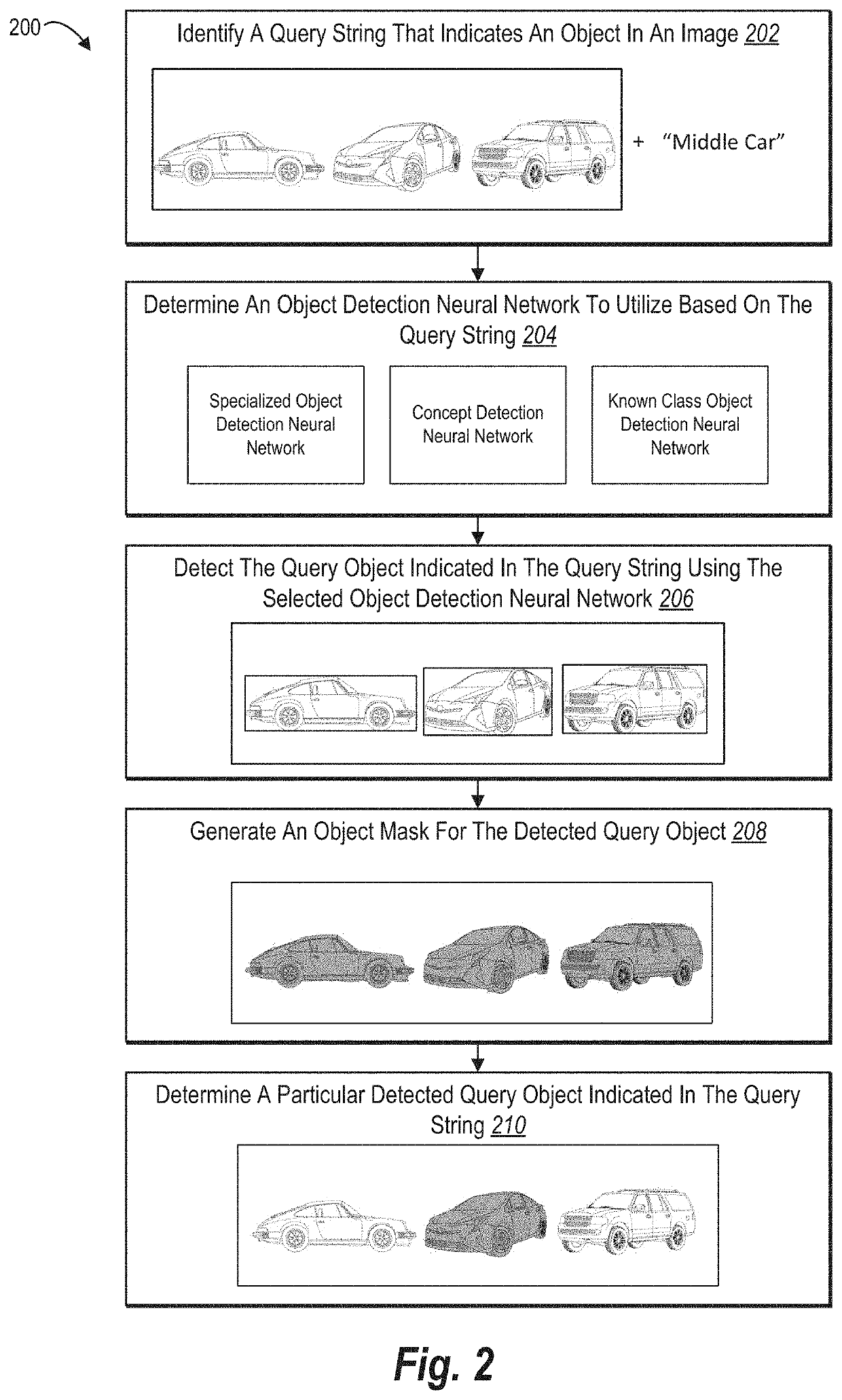Utilizing object attribute detection models to automatically select instances of detected objects in images
- Summary
- Abstract
- Description
- Claims
- Application Information
AI Technical Summary
Benefits of technology
Problems solved by technology
Method used
Image
Examples
Embodiment Construction
[0039]This disclosure describes one or more embodiments of an object selection system that accurately detects and automatically selects user-requested objects (e.g., query objects) in a digital image. In particular, in one or more embodiments, the object selection system builds and utilizes an object selection pipeline to determine which object detection neural network to utilize to detect a query object based on analyzing the object class of the query object. In addition, the object selection system can add, update, or replace portions of the object selection pipeline to improve overall accuracy and efficiency of automatic object selection within an image.
[0040]To illustrate, in one or more embodiments, the object selection system identifies a user query that requests detection of an object (i.e., query object) within an image. Based on analyzing the user query, the object selection system can select which object detection neural network of a plurality of multiple object detection ...
PUM
 Login to View More
Login to View More Abstract
Description
Claims
Application Information
 Login to View More
Login to View More - R&D
- Intellectual Property
- Life Sciences
- Materials
- Tech Scout
- Unparalleled Data Quality
- Higher Quality Content
- 60% Fewer Hallucinations
Browse by: Latest US Patents, China's latest patents, Technical Efficacy Thesaurus, Application Domain, Technology Topic, Popular Technical Reports.
© 2025 PatSnap. All rights reserved.Legal|Privacy policy|Modern Slavery Act Transparency Statement|Sitemap|About US| Contact US: help@patsnap.com



